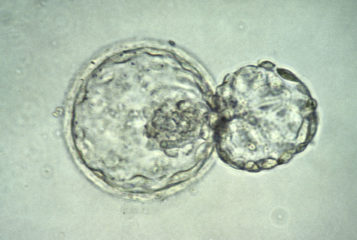A team of Harvard scientists has created 'beating' heart muscle using mouse embryonic stem cells. The research, published last week in the journal Science, means that scientists are one step closer to creating effective stem cell-based techniques to repair damage following heart attacks.
Dr Kenneth Chien and his team from the Harvard and Massachusetts General Hospital, US, identified progenitor cells that developed into ventricular muscle cells in genetically engineered mice embryos. Progenitor cells develop into muscle and non-muscle cells but by using biomedical fluorescent colour coding techniques the team were able to extract those that were pure ventricle generators. They then engineered cardiac muscle from the cells which appeared to 'beat' spontaneously. Ventricular muscle cells allow the heart to pump blood around the body and it is these cells which are damaged in a heart attack.
At present although there are many ways to attempt to prevent heart attacks, doctors are not able to restore damaged tissue following an attack. A weakened heart will ultimately fail. It is believed that embryonic stem cells (ES cells), because of their pluripotency - the ability to develop into any cell in the body - may provide doctors with effective post-heart attack treatments. But attempts at injecting stem cells direct into the heart have not proven to be a major success and scientists have, until now, not been able to create cardiac muscle from ES cells.
'This looks like the kind of work a normal heart tissue strip would do,' said Chien, adding: 'We went from embryonic stem cells to an organ.' The news was welcomed by the scientific community. 'I think over the last five years or so, we've made great progress in being able to guide stem cells into whatever cell type we want, in this case the heart,' said Dr Deepak Srivastava, director of the Gladstone Institute of Cardiovascular Disease at the University of California, San Francisco. But researchers issued caution that there is still a long way to go before treatments are possible. 'It's not the home run,' said Dr. Elizabeth Nabel, director of the National Heart, Lung and Blood Institute. 'But it's a major advance that's helping to move the field forward in a very significant way.'
In order to use the cardiac muscle in patients the strip created by Chien would need to be thicker and develop in a 3-D fashion. A stable blood supply would also need to be ensured. Srivastava, who was not involved in the research, said the Harvard team has 'begun to think about how to assemble these types of cardiac cells into a 3-D fashion, for future use within a heart.' He added: 'It's a long way from that right now… but it's a first baby step toward that goal.' Chien, however, believes that a treatment can be produced within five years.
Sources and References
-
Harvard team grows heart muscle
-
Beating Heart Tissue from Stem Cells
-
Scientists grow mice heart muscle strip that beats




Leave a Reply
You must be logged in to post a comment.